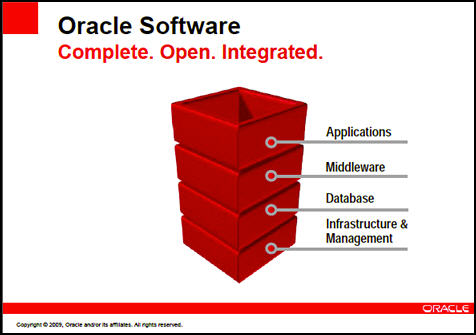Oracle's integration strategy: Customer trade-offs

Oracle's dual Presidents, Charles Phillips and Safra Catz, today opened the company's OpenWorld conference, which is taking place this week in San Francisco. Their keynote speech emphasized Oracle's efforts to integrate its diverse product line in a bid to make life simpler for customers.
Catz opened her part of the keynote by explaining what she called the "back story" behind Oracle's acquisition strategy. She did this with a humorous look at what would happen if we bought cars the way we buy enterprise technology.
In such world, Catz said we would go online to buy thousands of disconnected parts from many vendors, which our children would assemble into a completed car because the parts would not come with instructions. Just as we finished assembling the car, she continued, a light would go on indicating that an upgrade or patch is required. Catz said, "We would then do it all again."
Catz used this car assembly story as a metaphor for product complexity in the enterprise. According to Catz and Phillips, Oracle reduces this complexity by bringing together under one roof infrastructure, hardware, and database products that are "engineered to work together."
This diagram expresses Oracle's end-to-end vision:

Regarding the "open" tag line on the slide, Catz said, "We are slavishly devoted to open standards." Wow, that's a pretty strong statement.
THE PROJECT FAILURES ANALYSIS
From a project failures perspective, important truths lie beneath the cute story about assembling cars at home from parts purchased online. As Catz correctly points out, many organizations purchase enterprise technology in pieces from multiple vendors, which can make the selection and implementation process time-consuming and expensive for the customer, relative to buying from a single vendor.
I discussed these points during a follow-on conversation with Paco Aubrejuan, Oracle's Vice President of PeopleSoft Enterprise, who explained the benefits of single-vendor integration:
Integrating transactions at a technical level on starts to address user needs. From a business standpoint, however, users want to correlate data from multiple applications into a unified view, to gain actionable information that helps make decisions. We bring that benefit.
Another perspective. Even though integration can reduce implementation complexity on customer projects, large vendors may introduce another set of risks.
While a large end-to-end vendor can offer greater simplicity, the trade-off involves the customer transferring power to that vendor. In a single-vendor world, customers who invest in large systems can become beholden to the large vendor, which gains greater control over pricing, product features, maintenance costs, and future development. This is a major concern since replacing enterprise vendors is expensive, difficult, and time-consuming.
Whether you view Oracle's strategy as positive or negative may depend on whether you trust the company to act in customers' long-term best interests. It's a complicated equation that involves not just pricing, but also Oracle's product road map and ongoing vision.
My take. There's no magic bullet for reducing enterprise complexity, and Oracle's vision offers one particular path forward. Without doubt, observers with strong opinions will line up behind both camps.
What do you think about Oracle's plan to dominate the enterprise?